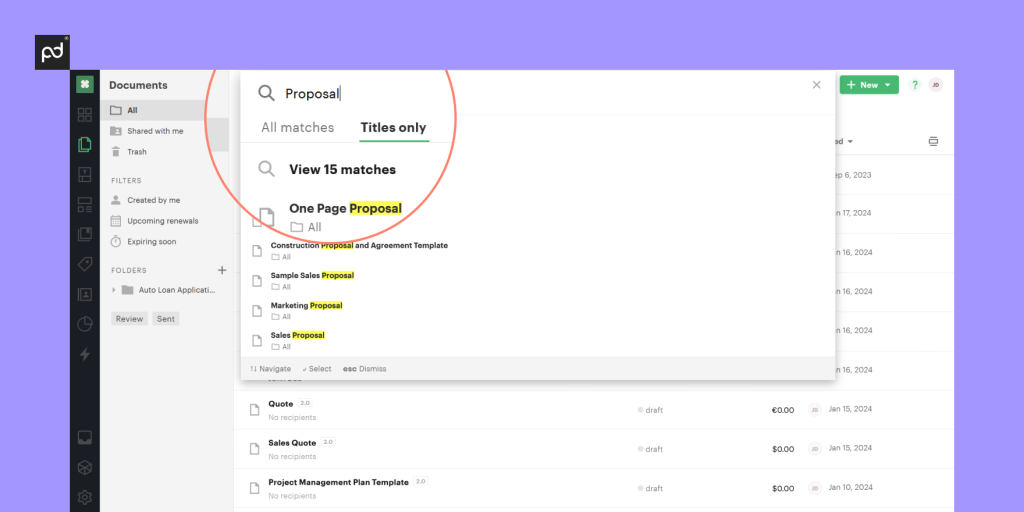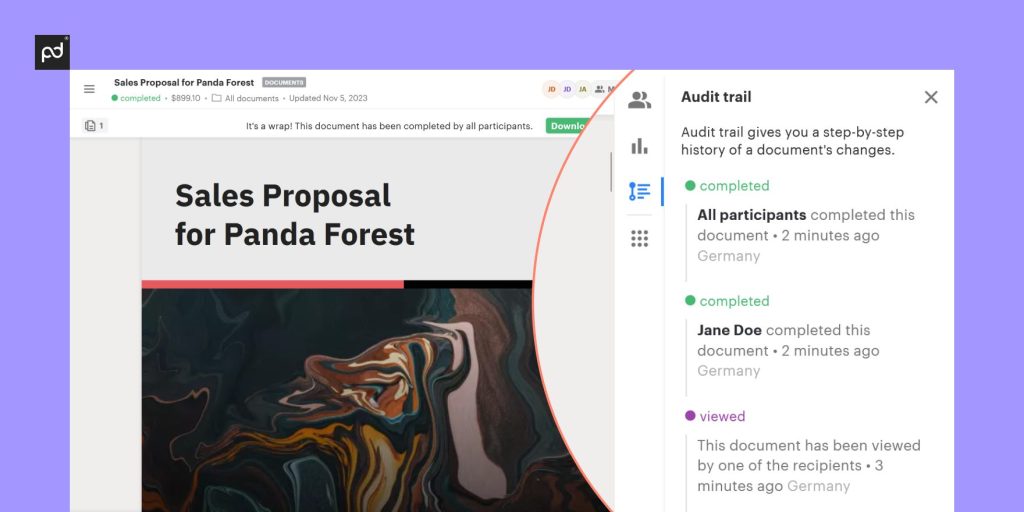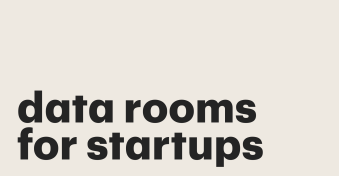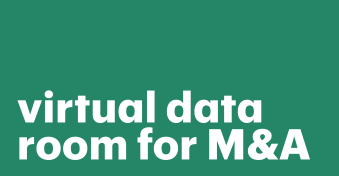Virtual data rooms (VDRs) have become pivotal in meeting the demands of executing modern, complex business deals.
A key component of successfully closing these deals is having all the online documents and folders easily located — and that’s where a data room index comes in.
A data room index is an ordered list, like a table of contents, for all the docs inside your VDR.
The index is used to simplify the search of information for all parties engaged in any business activity carried out via the data room; in particular, VDRs speed up conducting due diligence.
Read on to learn more about the importance of a data room index and practice-proven tips on structuring a VDR for locating documents in a smooth and efficient manner.
Key takeaways
- A data room index acts as a map of the VDR, illustrating all the documents, main folders and subfolders for a quick and easy search of your data.
- A data room index should have a hierarchical structure: top-tier folders, main folders and subfolders.
- Best practices for creating an effective folder structure in a data room are using an accurate naming structure, creating subfolders and giving access permissions.
- The main benefits of data room index are increased searchability, speed, transparency, automation and enhanced communication.
- The main mistakes to avoid when creating a data room index are lack of organizational checks, inconsistent or illogical folder layout, and an overcomplicated structure.
What to include in a data room index
Your data room index should have a clear hierarchy and simplified structure — folder organization will affect how easily partners, team members and investors will locate needed data.
An efficient structure would be as follows:
- Top-tier folders: Keep these as your broad categories like “Corporate Structure,” “Financials,” and “Legal.” Each should represent a main aspect of the business.
- Main folders: These should be more specific but still broad enough to encompass several documents, like “Audited financial statements” or “M&A agreements.”
- Subfolders: Use these for detailed categorization, such as different types of contracts or financial reports. This helps users navigate to exactly what they need without sifting through unrelated documents
Check out the following graphic to get a better idea of an example hierarchy:
| Top-tier folders | Main folders / Subfolders |
|---|---|
| Corporate Structure | Charter documents, articles of incorporation, organizational charts, bylaws, shareholder agreements |
| Financial Records | Audited financial statements, tax records, annual reports |
| Legal Documents | Contracts, agreements, licenses, legal disputes/litigation records |
| Intellectual Property | Patents, trademarks, copyrights, IP agreements |
| Strategic Documents | Business plans, market analysis, competitive analysis |
| Human Resources | Employee structure, key employee profiles, employment agreements, benefits information |
| Strategic Documents | Business plans, market analysis, competitive analysis |
| Due Diligence Reports | Previous due diligence findings, third-party reports |
| Regulatory Compliance | Compliance documents, audits, environmental and safety records |
Why a VDR index is used when organizing documents
Keeping things organized in your VDR is every bit as beneficial as having docs properly filed and easily retrieved IRL.
Here are some of the advantages a data room index provides:
Searchability
The index acts as a map — documents are cataloged in an orderly manner, often with search functionalities that allow users to find items using keywords, titles, or other metadata.

Efficient communication
A logical data room structure enhances communication within all members and assigned users.
And better communication works hand-in-glove with optimized collaboration.
Transparency and Accessibility
A clear index provides all parties with an overview of available documents, fostering transparency.
It’s particularly beneficial for investment banking use cases, such as conducting due diligence, allowing reviewers to systematically assess the necessary documents and relevant aspects of the business.
Speed and Accuracy
An indexed VDR streamlines the due diligence process, enabling faster review and decision-making.
Accurate indexing reduces the risk of overlooking critical documents, assists with managing workflow, and ensures all relevant information is considered.
Confidentiality
VDRs provide secure environments for sensitive documents.
Indexing complements this by allowing administrators to set specific permission levels on a folder or document basis, controlling who has access to what information.
Audit Trails
VDRs with indexing capabilities often include audit logs, tracking who accessed or modified documents, providing additional security and accountability measures.

How to effectively optimize folders in alignment with your data room index
While some VDR providers offer automatic document indexing, a few simple guidelines can make your data room structure much more effective and tailored to your business needs.
Use an accurate naming system
Ensure your data room table of contents follows a clear, consistent naming convention — have the names of top-level folders and main folders reflect their content.
This makes it easier for users to understand what each folder contains and find documents quickly.
Keeping your titles direct and information will help our users find what they need within seconds.
- Start with a main category of documents and create a folder;
- Limit the number of top tier folders to allow for faster scannability
- Tag documents with metadata
Assign access permissions
An integral part of setting up a data room is assigning access permissions.
Setting access rights for each top-tier folder and document category prevents data leakage or exfiltration.
These permissions may be best assigned using role based access control (RBAC) — this simply means the privileges a person has don’t correspond specifically to their name; instead, they correlate to the role they play with respect to handling intellectual property, mergers and acquisitions, etc.
Document tracking and audit logs will also tell you who viewed or edited a file.
This is particularly important for projects involving cooperation with several investors working to launch an IPO, or involved in conducting due diligence.
Alongside access logs, make sure your VDR provides additional features like digital watermarking and is fully compliant with data protection standards to further protect sensitive documentation.
Maintain and update a virtual data room index
Keeping your data room index updated regularly is every bit as pragmatic as organizing that old file cabinet in the physical world.
This simply means:
- Regularly updating documents;
- Saving only relevant information;
- Adding new documents based on feedback;
- Changing and/or updating the number of folders and restructuring them when necessary;
- Establishing a routine for structure and document re-checking.
Regular maintenance ensures your VDR only contains the latest, necessary information — which in turn simplifies the search of specific documents because you’re keeping an up-to-date data room index and current, intuitive folder structure.
Mistakes to avoid when creating a data room index
Here are a few potential pitfalls to easily side step when setting up and maintaining the folder structure in your VDR:
- Overly complex structures: Keep the table of contents to your virtual data room simple and clear — you’ll prevent unnecessary speed bumps in the deal process.
- Inconsistent naming conventions: Proper naming of folders and subfolders in the data room index facilitates easy document search and retrieval, avoiding confusion and delays.
- Unbalanced user permissions: Accurately set permissions to expedite conducting due diligence without unnecessary access restrictions.
Streamline all your deals with PandaDoc VDR software
With PandaDoc, you can create your own virtual data room to help expedite closing all your deals, from sales in your pipeline to final contract negotiations after due diligence has been performed.
Fully customize your VDR with flexible access permissions for all stakeholders to easily and securely share documents — we’ll help you deliver an efficient, collaborative process from start to finish.
The PandaDoc platform also provides a wide range of document management tools, hundreds of business templates, streamlined e-signature software, and much more.
Schedule a demo or start a 14-day trial today!
Disclaimer
PandaDoc is not a law firm, or a substitute for an attorney or law firm. This page is not intended to and does not provide legal advice. Should you have legal questions on the validity of e-signatures or digital signatures and the enforceability thereof, please consult with an attorney or law firm. Use of PandaDoc services are governed by our Terms of Use and Privacy Policy.


